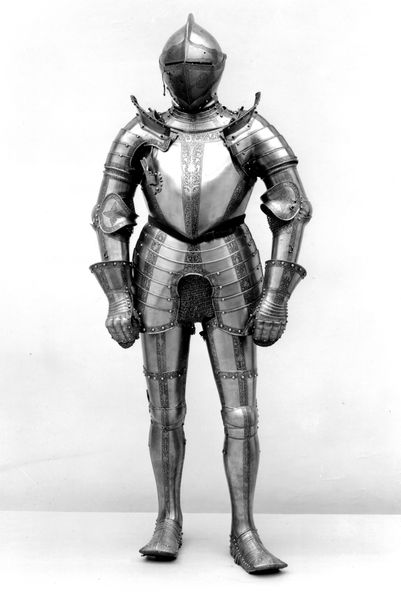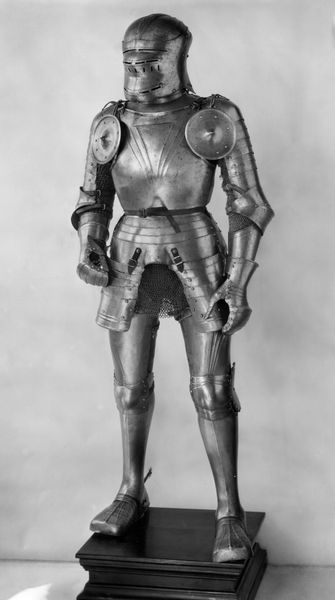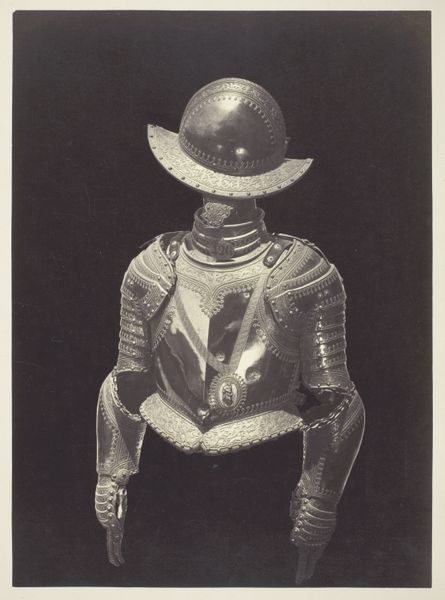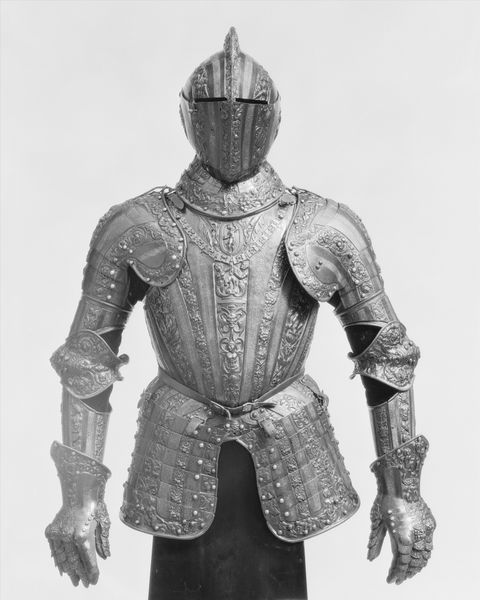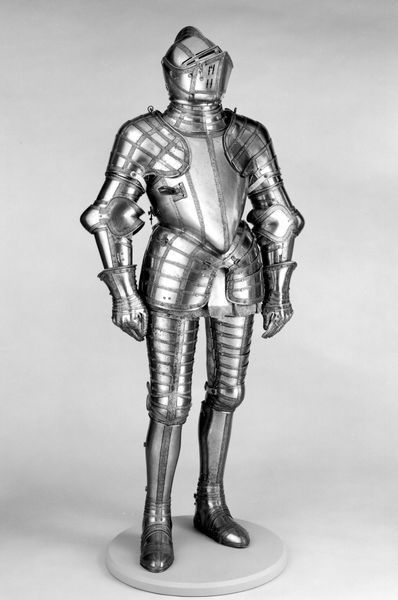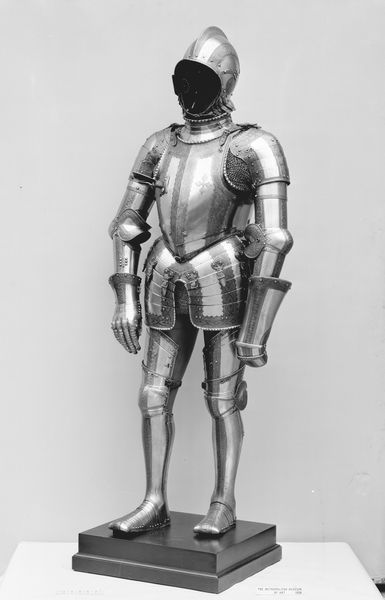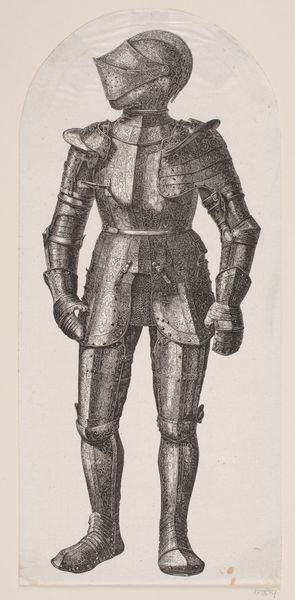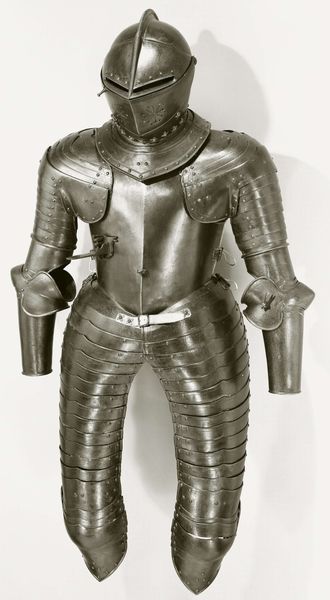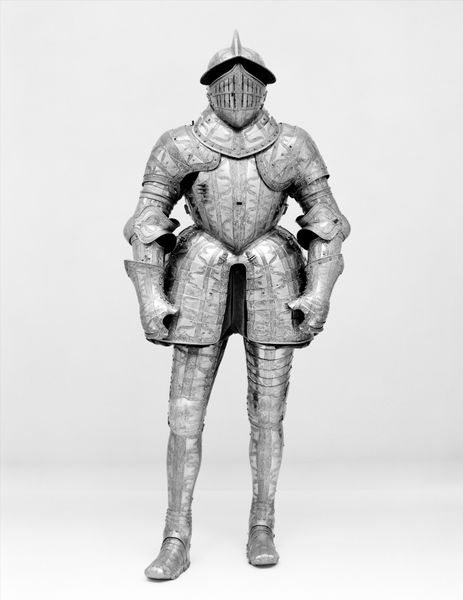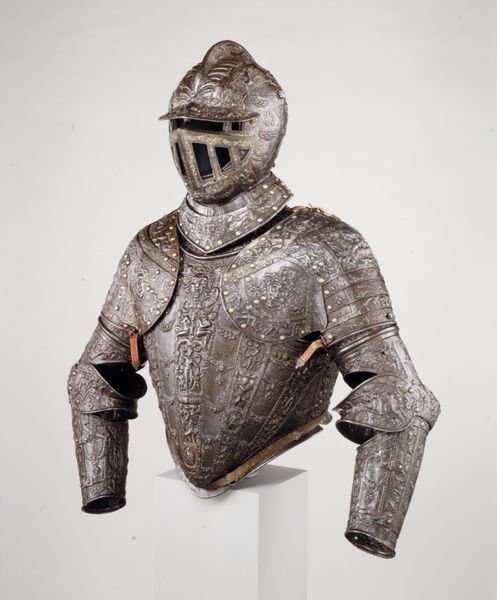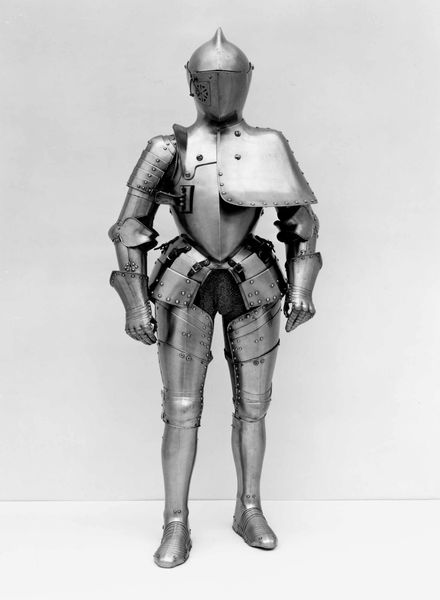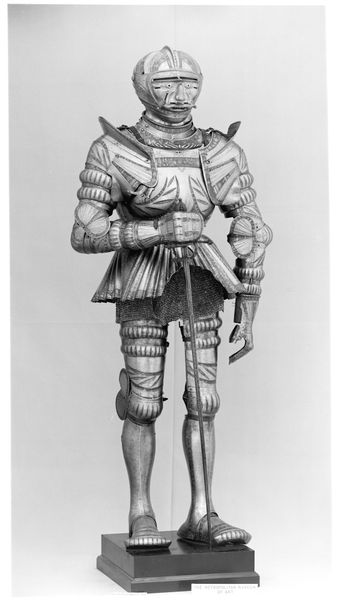![[The Armor of Philip III] by Jane Clifford](/_next/image?url=https%3A%2F%2Fd2w8kbdekdi1gv.cloudfront.net%2FeyJidWNrZXQiOiAiYXJ0ZXJhLWltYWdlcy1idWNrZXQiLCAia2V5IjogImFydHdvcmtzL2QwZDJkZjU4LTAzN2EtNGVjZi05ODFkLWEyOWExZWZkNDJkMS9kMGQyZGY1OC0wMzdhLTRlY2YtOTgxZC1hMjlhMWVmZDQyZDFfZnVsbC5qcGciLCAiZWRpdHMiOiB7InJlc2l6ZSI6IHsid2lkdGgiOiAxOTIwLCAiaGVpZ2h0IjogMTkyMCwgImZpdCI6ICJpbnNpZGUifX19&w=3840&q=75)
print, photography, sculpture
#
portrait
# print
#
sculpture
#
photography
#
sculpture
#
armor
#
realism
#
statue
Dimensions: Image: 33.3 x 23 cm (13 1/8 x 9 1/16 in.) Mount: 57.2 x 45.7 cm (22 1/2 x 18 in.)
Copyright: Public Domain
Curator: Looking at this image, I immediately feel transported, oddly, not to a battlefield but to a grand hall, dimly lit, with the clatter of noble conversation and perhaps…treachery? Editor: Indeed, an intriguing entry point. Here we have a print from 1866 that showcases "[The Armor of Philip III]." What stands out, initially, is the photographer’s dedication to capturing the materiality. Note the intricate details; the play of light and shadow across the sculpted steel creates depth and volume. It's as though we could reach out and touch the cold, hard metal. Curator: Absolutely. And the craftsmanship! The embossed designs swirling across the breastplate and down the arms tell a story. One imagines hours of painstaking work went into each piece. Though, thinking about it, is it supposed to feel, just a bit sad? Encased and unmoving like that...it’s less about the king and his strength, more about stillness. Editor: The stillness is key. Consider the formal qualities; the photograph, using sharp tonal contrast, enhances the sculptural presence of the armor, staging it as almost a surrogate portrait. Note, too, the centrality and symmetry – hallmarks of power. This isn’t just armor; it's an ideological construct. Curator: I get that... Still, it makes you wonder about the man *inside* all that steel. Did he ever feel trapped by the weight of it all? Maybe that's why I read some sadness in the image—it hints at the personal cost of leadership, or, in another view, how all material decays and goes. Editor: It's precisely that tension—between the grand symbol and the implied human presence—that makes it a compelling subject. In semiotic terms, the armor functions as a signifier of authority and protection, even if it whispers of confinement and decay as you've put it. The photograph doesn't just document armor; it stages a discourse about power, representation, and, maybe, human vulnerability. Curator: Makes me wonder what Philip would have thought about someone snapping his old armor and sharing it this way centuries later. But in the end, I see a reminder of how beauty and the most extraordinary art may emerge in even the harshest of historical circumstances. Editor: Precisely. So next time you are roaming the Metropolitan Museum of Art and viewing such an item, I advise everyone to think of not the raw and historical symbolism of art, but rather its personal undertones as they resonate with everyone differently!
Comments
No comments
Be the first to comment and join the conversation on the ultimate creative platform.
